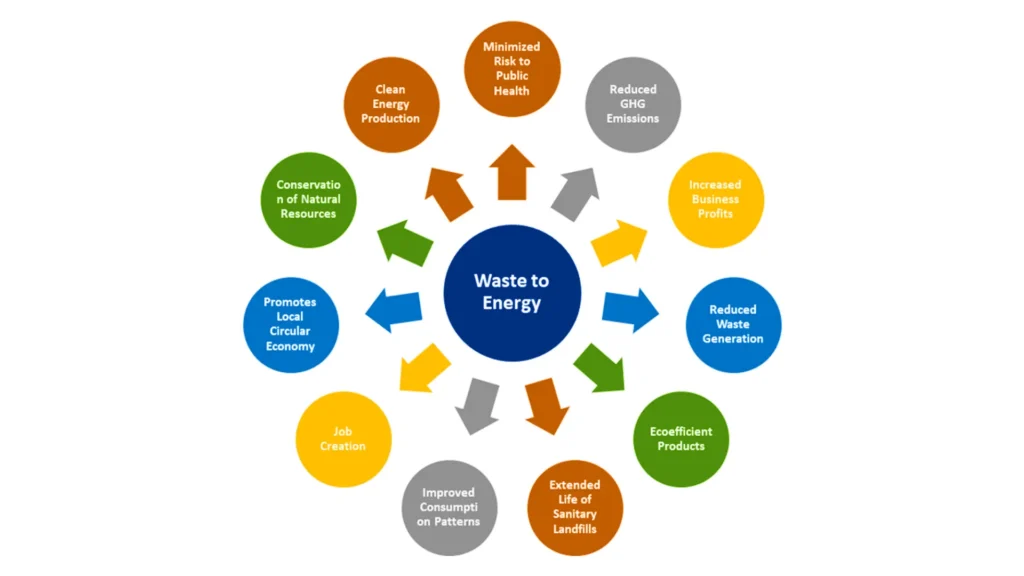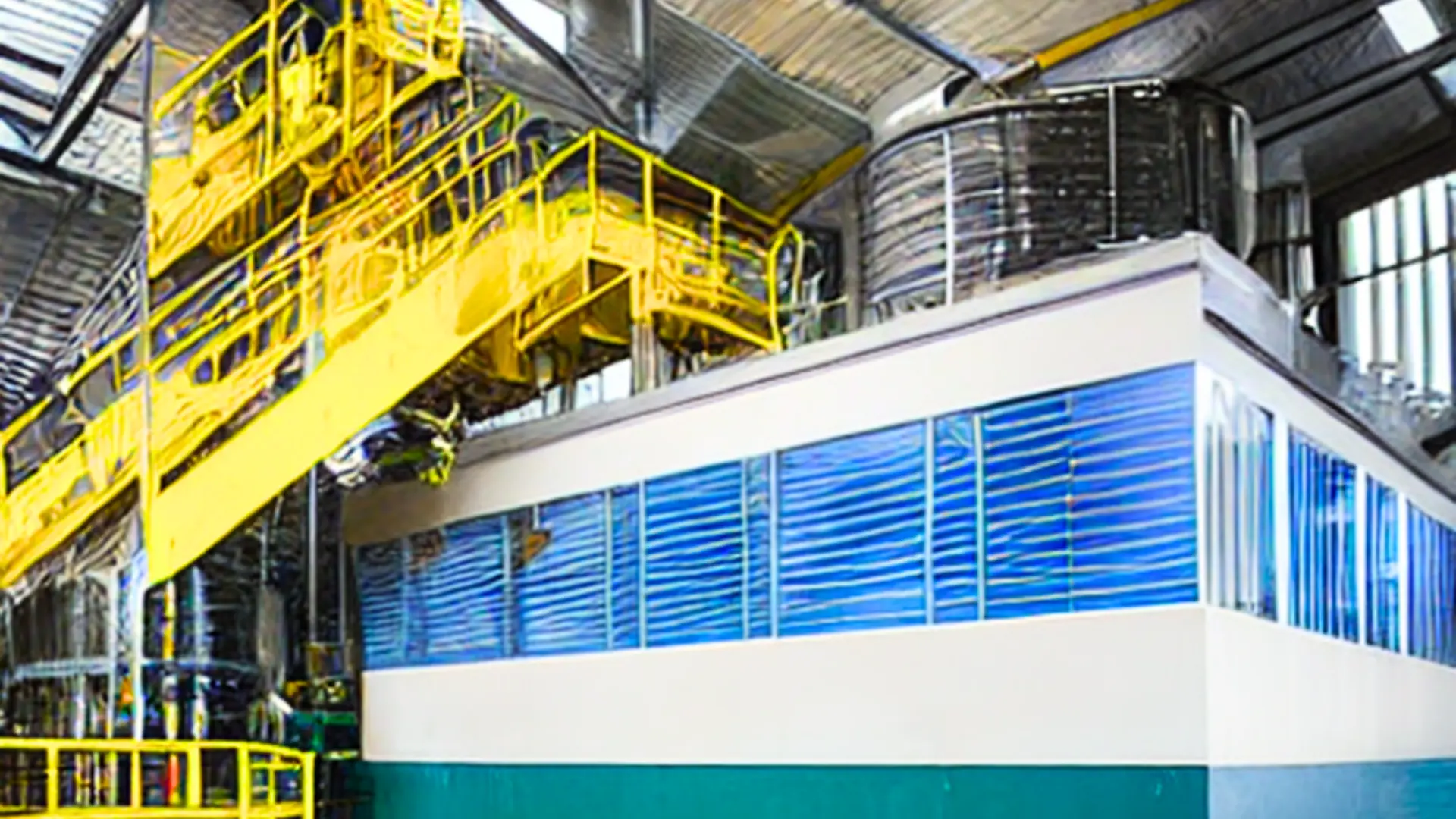How Far Are We from Commercializing Waste to Energy Plant?
The world faces a waste management crisis, with about 2 billion tones of municipal solid waste generated annually. To tackle this problem, waste to energy plant has emerged as a promising solution. However, the question remains: How far are we from commercializing waste to energy?
Waste to energy plant technology has been around for several decades, but widespread commercialization has been slow to materialize. Despite the potential benefits of this technology, including reducing greenhouse gas (GHG) emissions, generating clean energy, and minimizing waste, several barriers have prevented the widespread adoption of WTE technology. In this article, we will explore some factors that have contributed to the slow commercialization of WTE technology and examine what steps should be taken to speed up its adoption.
What are the Challenges in Waste to Energy Plant Commercialization?
The following are the key factors that have slowed the commercialization of WTE technology:
1-High Cost of Building and Operating WTE Facilities
One of the main factors that have slowed the commercialization of WTE technology is the high cost of building and operating WTE facilities. WTE plants require significant upfront capital investment, which can be a barrier for numerous municipalities and private companies. The cost of building WTE facilities can vary widely depending on the size and complexity of the plant, the type of waste being processed, and local regulations and requirements. In addition, operating costs can also be high, particularly for facilities that use advanced pollution control technologies or that process low-quality waste streams.
2-Waste to Energy Plant – A Risky Investment!
Another factor that has slowed the commercialization of WTE technology is the perception that it is a risky investment. For example, some investors and stakeholders are concerned that WTE technology may not be economically viable over the long term or that there may be regulatory or public opposition to the construction and operation of WTE facilities. This perception of risk can make securing financing for WTE projects more difficult and may deter private investors from getting involved.
3-Lack of Supportive Policies and Regulation
A related factor contributing to the slow commercialization of WTE technology is the lack of supportive policies and regulations. Governments and regulatory bodies have been slow to adopt policies and regulations encouraging WTE technology development in various cases. This can include everything from tax incentives and subsidies to streamlined permitting processes and favorable regulatory frameworks. Without supportive policies and regulations, it can be more difficult to attract investment and speed up the commercialization of WTE technology.
4-Limited Range of Waste Types
Another factor that has slowed the commercialization of WTE technology is the limited range of waste types that can be processed using this technology. While WTE technology can be effective for processing municipal solid waste, it is not well-suited for processing other types of waste, such as hazardous or industrial waste. This limits the potential applications of WTE technology in certain contexts and can make it more difficult to attract investment and commercialize the technology.
5-Variability of Waste Streams
One key challenge is the variability of waste streams. Waste-to-energy technology relies on the combustion of organic matter to generate energy, but different wastes may have varying energy content and combustion characteristics. For example, some types of waste may have a high moisture content or low calorific value, making them more difficult to combust and reducing the efficiency of the energy conversion process. As a result, it may be necessary to develop specialized WTE technologies for various wastes or to implement pre-treatment processes to improve the quality and consistency of the feedstock.
6-Environmental and Health Impacts of WTE Technology
Another challenge is the potential environmental and health impacts of WTE technology. While WTE facilities can offer significant benefits to reducing greenhouse gas emissions and improving waste management practices, they can also generate air pollution and hazardous waste. For example, the combustion of organic matter can generate emissions of particulate matter, nitrogen oxides, and other pollutants, contributing to respiratory and cardiovascular health problems. In addition, the residual ash and slag generated by WTE facilities can contain heavy metals and other contaminants that may require special handling and disposal procedures. To address these concerns, it may be necessary to implement strict environmental regulations and monitoring programs to ensure that WTE facilities operate safely and sustainably.

7-Availability of Feedstock for WTE Facilities
One key factor is the availability of feedstock for WTE facilities. While some types of waste, such as municipal solid waste, are abundant and readily available, others may be more limited in supply. For example, certain agricultural and industrial waste types may only be available in certain regions or seasons, limiting the feasibility of WTE projects in those areas. In addition, the quality and consistency of the feedstock can impact the efficiency and effectiveness of WTE technology, which can be a barrier to commercialization.
What is a Roadmap toward Waste to Energy Plant Commercialization?
Despite these challenges, several promising developments suggest that the commercialization of WTE technology may accelerate in the coming years. For example, there has been increased investment in research and development aimed at improving the efficiency and sustainability of WTE facilities. This includes the development of new technologies for processing low-quality waste streams, improving air and water pollution control systems, and enhancing the energy recovery potential of WTE plants.
1-Successful Examples of WTE
Several successful WTE facilities have been built and operated worldwide. For example, the Spittelau WTE plant in Vienna, Austria, is one of the world’s most efficient and sustainable WTE facilities. The plant processes over 250,000 tons of waste annually and generates enough electricity to power over 70,000 homes. The facility also incorporates advanced pollution control technologies, such as selective non-catalytic reduction and fabric filters, which help minimize its operations’ environmental impact.
2-A Ban on Waste
In 2018, China banned the import of 24 types of solid waste, including plastics and mixed paper. This ban has created a significant challenge for various countries that rely on China to process their waste. In response, numerous countries are exploring waste to energy as a solution. For example, the UK has announced plans to invest £10m in waste to energy projects.
3-Carbon Capture and Storage
One of the major challenges of waste to energy is the emissions produced during the process. However, recent developments in carbon capture and storage (CCS) technology have the potential to reduce these emissions significantly. CCS involves capturing carbon dioxide emissions from waste to energy facilities and storing them underground.
4-Innovation in Waste to Energy Technology
Several new waste to energy technologies are currently being developed that can significantly improve the efficiency and cost-effectiveness of the process. For example, researchers at the University of Texas have developed a new gasification process that could convert waste into energy at a lower cost than traditional incineration.

5-Government Policies and Regulations
Another factor that could accelerate the commercialization of waste to energy is government policies and regulations. Many countries are setting ambitious targets for reducing waste going to landfills and increasing renewable energy production. For example, the European Union has set a target to recycle 65% of municipal waste by 2035 and to have a net-zero greenhouse gas emission by 2050. These policies provide a clear signal to the market that waste to energy is an essential part of achieving these targets and could incentivize investment in the sector.
6-Public Awareness and Education
Public awareness and education also play a significant role in commercializing waste to energy. Many people still view waste as a problem rather than a resource. Educating the public about the benefits of waste to energy could help to shift this perception and create a demand for this technology. Local communities can also play a role in commercializing waste to energy by supporting the development of facilities in their area.
7-Collaboration among Various Sectors
Collaboration between different sectors could also help to accelerate the commercialization of waste to energy. Waste management companies, technology providers, and energy producers could work together to develop integrated solutions that maximize the value of waste. For example, waste to energy facilities could be integrated with renewable energy sources such as solar or wind power to provide a more reliable and cost-effective energy supply.
8-Need for Resilient and Sustainable Infrastructure
Finally, the COVID-19 pandemic has highlighted the importance of resilient and sustainable infrastructure. The crisis has disrupted global supply chains and highlighted the vulnerabilities of existing waste management systems. WTE can provide a local and sustainable solution that reduces dependence on imports and strengthens local economies.
9-Interest of Investors and Stakeholders
Another promising development is the increasing interest in WTE technology among investors and stakeholders. As the global demand for clean energy and sustainable waste management solutions grows, many investors and stakeholders view WTE technology as a promising investment opportunity. This has increased investment in WTE projects worldwide, particularly in Europe and Asia.
10-Social and Cultural Context of Waste Management
The social and cultural context of waste management can impact the commercialization of WTE technology. For example, in some communities, there may be a cultural preference for traditional waste management practices, such as landfilling or incineration, making it difficult to acquire public support for WTE facilities. There may also be concerns about the potential health and environmental impacts of WTE technology, which can lead to opposition from community groups and environmental advocates. To address these challenges, engaging in community outreach and education efforts may be necessary to build support for WTE technology and address concerns about its environmental and social impact.
11-Integration of WTE with Other Renewable Energy Sources
Another opportunity to commercialize WTE technology is the potential for integrating it with other renewable energy sources. For example, WTE facilities can be combined with solar or wind power generation to create hybrid energy systems that provide a more stable and reliable source of electricity. In addition, WTE facilities can generate biogas, which can be used as a renewable fuel for transportation or heating. By combining WTE technology with other renewable energy sources, we can create a more diversified and sustainable energy system that reduces our reliance on fossil fuels and promotes environmental sustainability.
12-Need for Regulatory Environment
The regulatory environment can also play a significant role in the commercialization of WTE technology. While some policies and regulations promote the development of WTE facilities, such as renewable energy mandates and feed-in tariffs, some regulations can create barriers to entry. For example, environmental regulations related to air emissions, waste disposal, and water quality can be complex and costly, making it difficult for WTE facilities to meet regulatory requirements. In addition, some jurisdictions may have moratoriums or other restrictions on developing WTE facilities, limiting the availability of sites for new projects.
13-Availability of Funding and Investment
Another factor is the availability of funding and investment for WTE projects. While WTE technology can offer significant economic benefits, including energy savings and revenue from electricity generation, the high upfront costs of building and operating WTE facilities can be a significant barrier to commercialization. This is true for small and medium-sized enterprises, which may not have the financial resources or access to capital needed to develop and deploy WTE technology. As a result, there may be a need for public and private investment to support the development and commercialization of WTE technology, particularly in underserved areas or regions where waste management infrastructure is limited.

14-Promoting Social and Economic Development
Finally, there is the opportunity to leverage waste-to-energy technology to promote social and economic development. WTE facilities can create local jobs and revenue streams, particularly in rural or underserved areas with limited waste management infrastructure. In addition, WTE facilities can provide a reliable source of electricity and energy security, particularly in regions where access to grid electricity is limited or unreliable. By promoting the development of WTE technology in these areas, we can help to promote economic growth and improve the quality of life for local communities.
Conclusion
Overall, the commercialization of waste-to-energy technology is a complex and multifaceted challenge. While this technology has many potential benefits, including energy savings, environmental sustainability, and improved waste management practices, there are also significant barriers to overcome. To successfully commercialize WTE technology, it will be necessary to address these barriers through a combination of policy and regulatory reform, investment in research and development, and public outreach and education efforts. By doing so, we can unlock the full potential of WTE technology and realize its various benefits for the environment, public health, and energy security.
In order to realize the full potential of waste-to-energy technology, we must continue to invest in research and development to improve its performance and reduce its costs. This includes exploring new materials and design strategies to enhance the efficiency of the energy conversion process and developing new technologies for pre-treatment and processing waste streams. In addition, we must continue to engage with stakeholders across the public and private sectors to promote the development and deployment of WTE technology in a socially and environmentally responsible manner. By working together, we can ensure that waste-to-energy technology becomes integral to our sustainable energy future.
In conclusion, waste-to-energy technology has the potential to play a critical role in our transition to a more sustainable and resilient energy system. However, the commercialization of this technology is not without its challenges. To successfully develop and deploy WTE technology, we must address the technical, economic, regulatory, and social barriers currently limiting its potential. By doing so, we can unlock the many benefits of WTE technology, including improved waste management practices, reduced greenhouse gas emissions, and enhanced energy security and economic development.
To Cite this article:
‘A.S. Nizami. How Far Are We From Commercializing Waste to Energy?. 2023. Publication & Data. Green Flagship.’

